This may seem like a rather simple topic, and I used to think it was as well, but over time I have come to realize that feeding the fish, keeping them healthy and not polluting the tank is actually a complex proposition.
As mentioned in the previous articles on quarantining and acclimating fish, there is an initial phase of feeding the fish that occurs right after they are acquired. During this phase, we throw all types of food in large quantities to try and get the new fish to eat. Then once they are eating and in the display tank, the goal is the keep them healthy and not pollute the tank. These phases have some things in common, but they are also quite different in their goals and their duration.
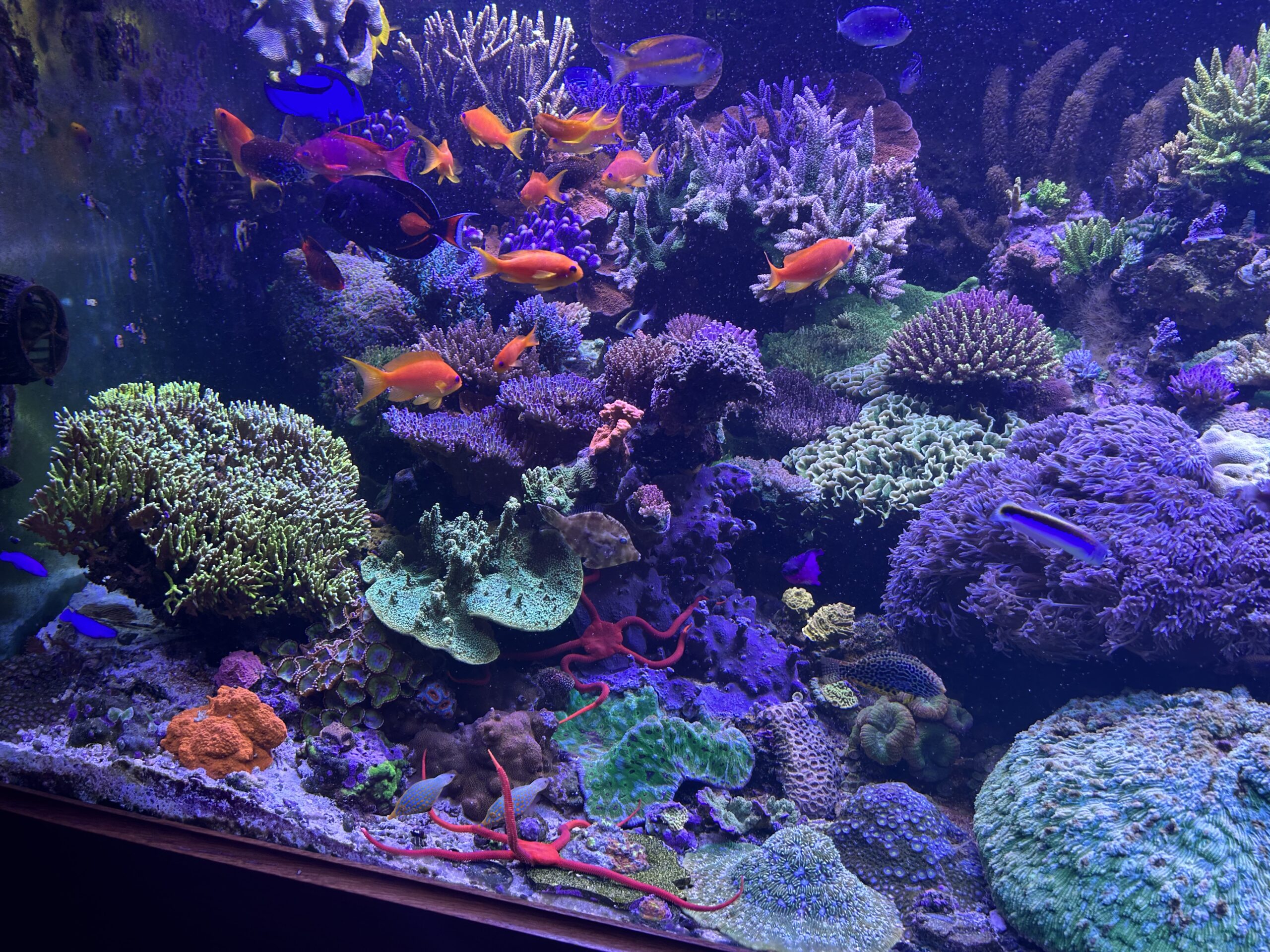
When working out a feeding schedule and what to feed a number of factors need to be considered. The first of these is what does a fish eat. That is, is it a carnivore, herbivore, or omnivore? This then often plays into how they feed. Are they a grazer or a fish that snags food from the water column or do they pick from only certain surfaces? Lastly, when do they like to feed? Some fish feed or pick all day, some have one big meal while others feed predominantly during dusk or dawn.
All of these factors need to be taken into consideration when working out the best way to keep fish properly fed. Along with these considerations, the other goal is to only feed enough to keep the fish healthy, but not so much that food goes to waste. Fish always seem hungry, so since we want them to be healthy we tend to feed them more than we should and we usually do so in a bolus feeding rather than in small frequent feedings.
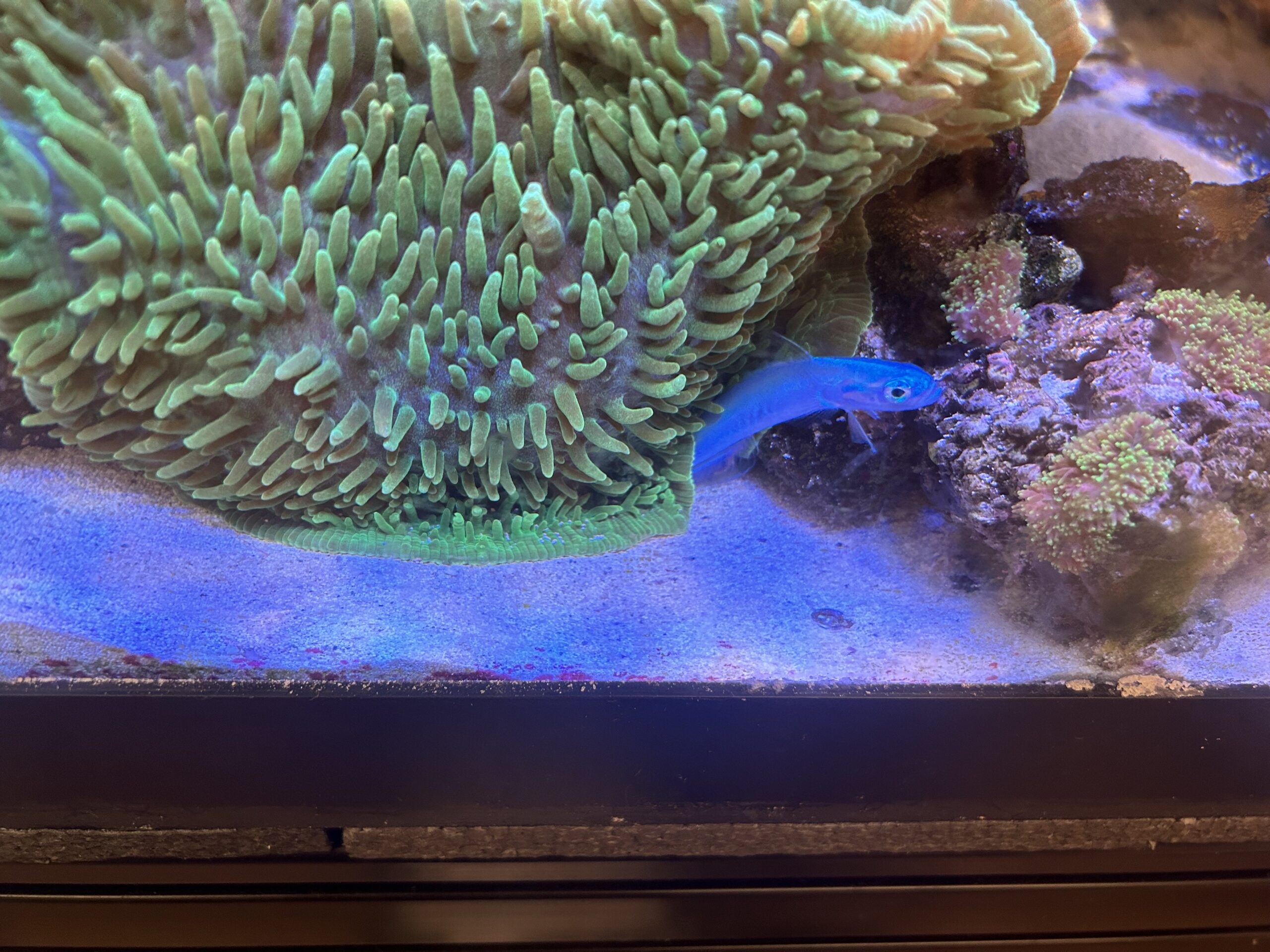
Feeding in this way is bad for at least two reasons. First, on the reef, they are constantly active, and as often as I have been diving and watching fish in their natural habitat, unlike in many tanks I have never observed an overweight fish. Literally every fish I have ever seen was thin and sleek. Seeing an overweight fish in a tank is not a good sign as it often means either the fish is being fed too much, or it is inactive. Both of these can lead to a fatty liver which can result in a shortened lifespan. Second, the more we feed the fish the more waste they produce and the more that needs to be removed either through filtration or water changes. This is why it is critical to get feeding right.
When I first got into a hobby the rule was that a fish’s stomach is only as big as its eyes. Therefore, only as much food as would fill a fish’s eye should be fed at any given time. The other rule was that only enough food should be given so that it is consumed in 2-3 minutes. Fortunately, over time I have come to realize that both of these rules are incorrect. A fish’s stomach is almost always bigger than its eye and having 2-3 minutes of food floating around in a tank will lead to a lot of waste and a lot of pollution. Having a better understanding of feeding behavior and the fish’s needs my fish are now fed in a variety of ways to try and mimic not only how they feed, but also what they feed on.
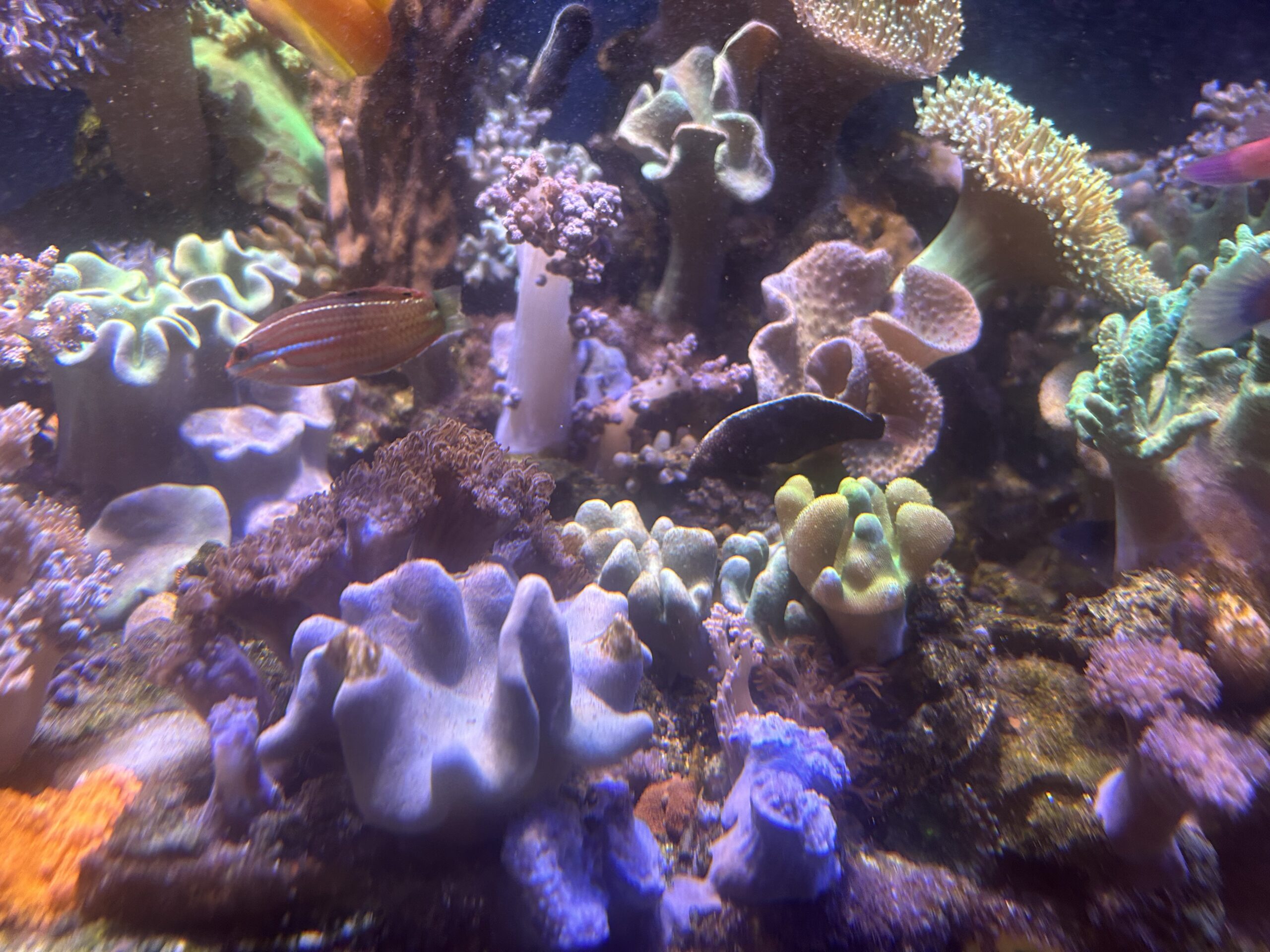
For the herbivores, food is provided in a variety of ways including a variety of foods. Nori is provided daily in small amounts on a nori feeder as well as after it has been moistened and smashed into a piece of rock. In addition to doing this, thanks to a tip from Matt Wandell, for picky eaters or for fish that prefer to pick nori or other materials like zucchini, cucumbers, and bananas are gently pushed into broccoli stalks, so that the fish can pick at them as they would do naturally.
I have also used this broccoli stalk method for some omnivores using mysis, shrimp, copepods, or prepared mixes that include algae or nori. Most herbivores graze almost constantly so for them it is best to provide foods that will be present in the tank for long periods without decomposing that they can graze on.
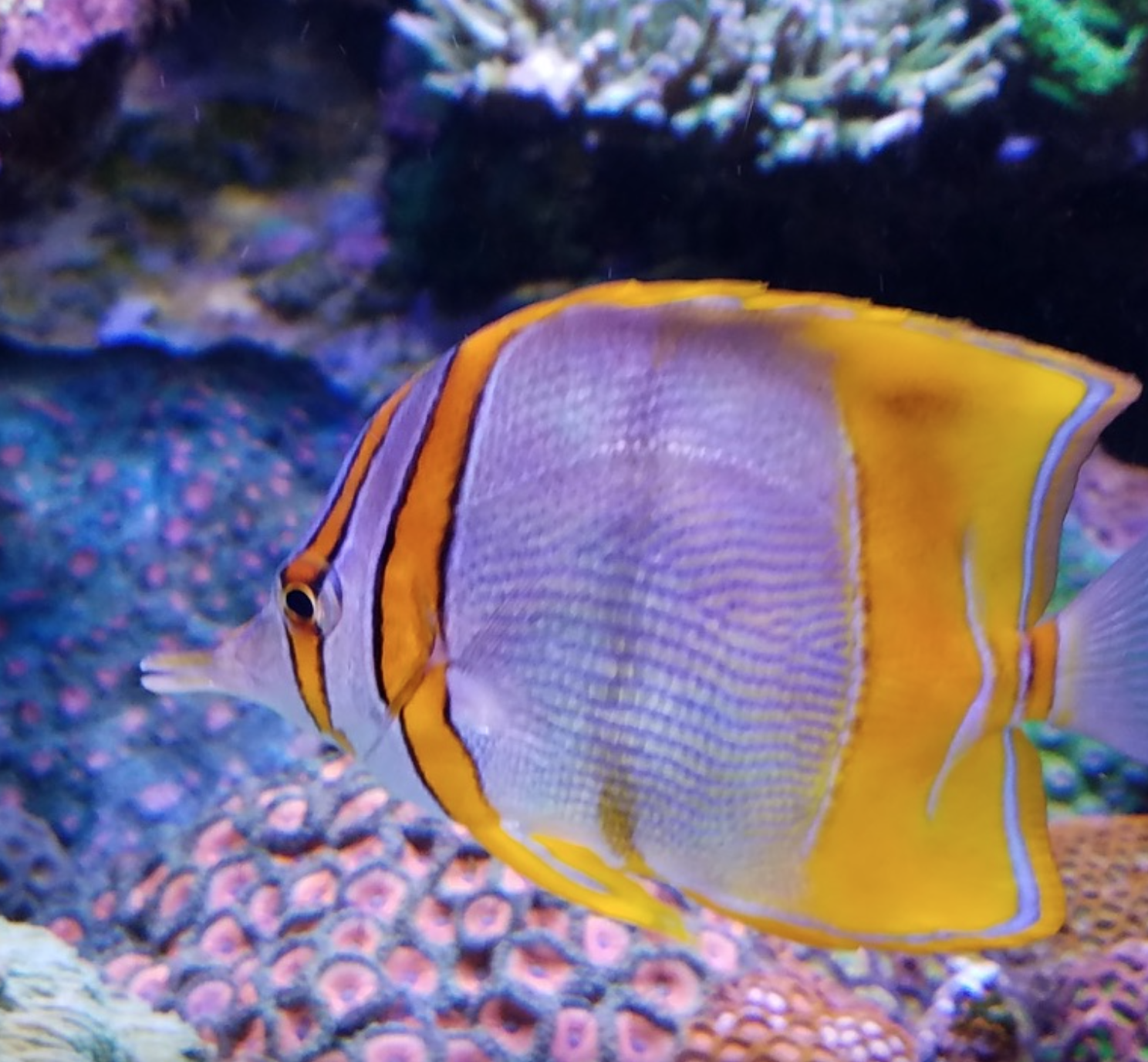
For planktivores and omnivores, like anthias, wrasses, clownfish, and dottybacks, feeding is a bit less complicated as they are generally easier to feed, but it is easy to overfeed them. These fish are accustomed to constantly picking small foods from the water and from the rocks and corals. So in order to try and replicate how they normally feed small amounts of food need to be given often.
In my tanks, these fish are fed 8-10 times per day. This may seem like a lot and impractical, but it actually is not that difficult due to technology. Each of my smaller tanks has an automatic feeder on it and my large tank has two feeders. Each of these feeders is programmed to feed four times a day. They are filled with a variety of foods including pellets, and flakes as well as freeze-dried copepods and mysis. The feeders are programmed to provide food every two hours during the course of the day while I am away.
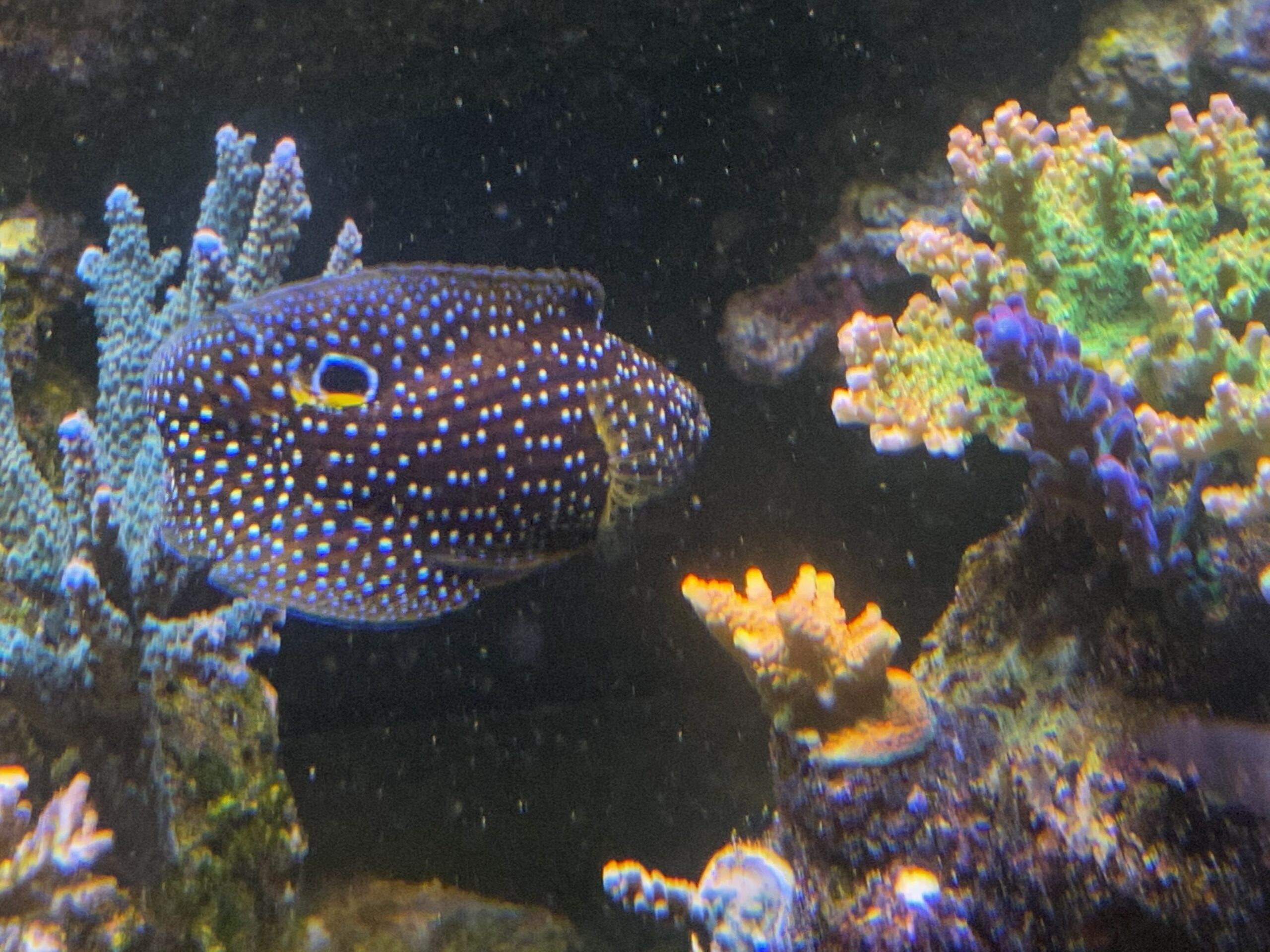
These feeders are placed directly above a feeding ring so that when the food is dispersed it falls into the ring rather than just being dumped at the surface where it would flow over the overflow and turn into waste. In addition to these feedings a small feeding of frozen food, which has been allowed to thaw overnight, is given first thing each morning. During the evening three more small feedings are provided of frozen foods including mysis, copepods, and rotifers as well as a couple of homemade mixes.
As a general rule when determining how much to feed, always feed a little bit less than you think you should. I have never seen a fish starve to death once it was feeding by being given too little food. It should be noted that very few of the fish we keep feed like it is Thanksgiving with one big meal. Most of the fish we keep feed in a smaller more constant pattern and this is what needs to be provided for them in order to optimize their health.
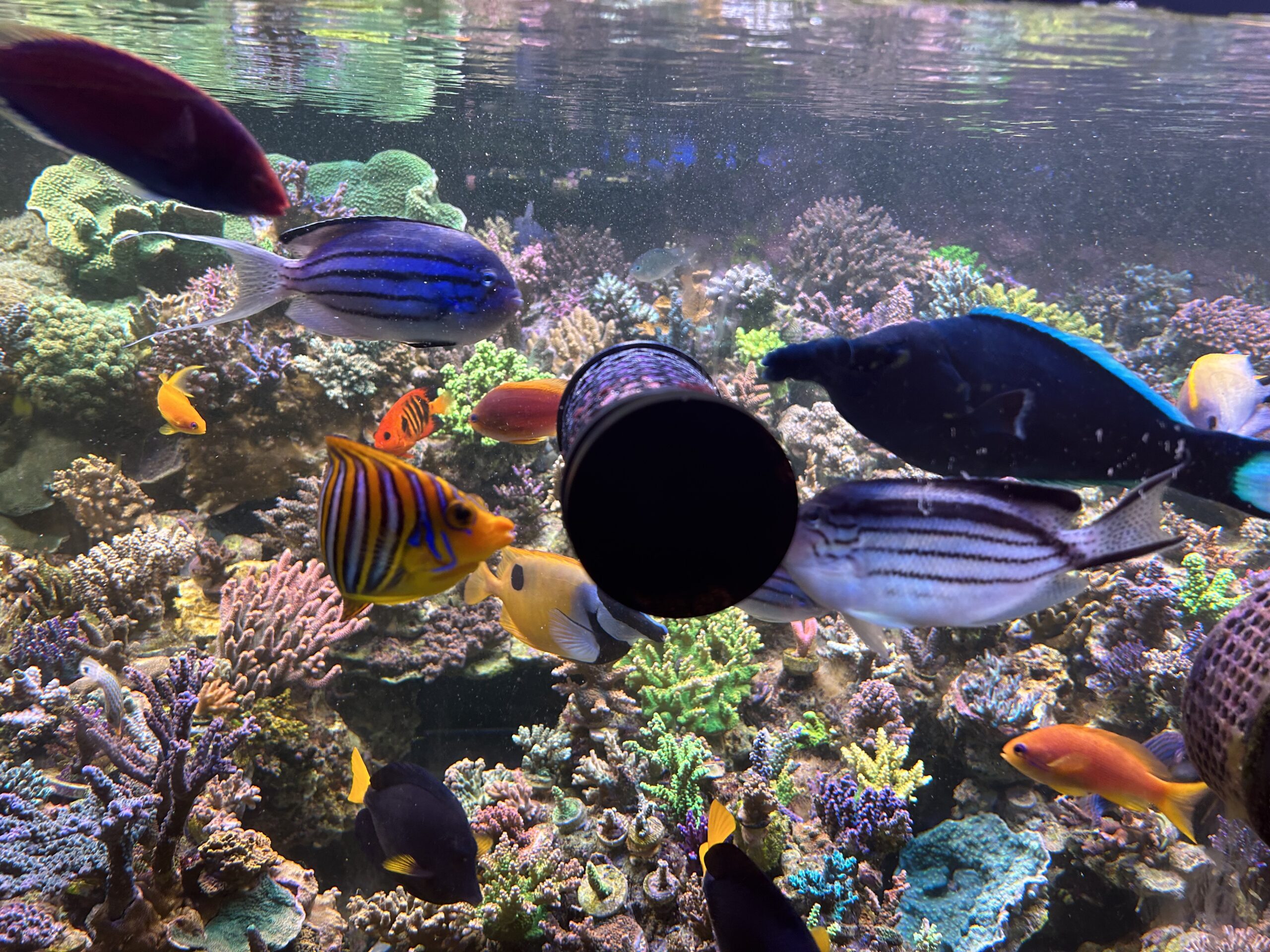
Like us, fish also do best when provided with a variety of foods. Even we would get bored on a diet of nothing but filet, so it is necessary to provide a variety of foods to ensure optimal health. In order to do this try and get the best of each type of food out there. My fish are fed four types of pellets including Reef Nutrition’s TDO pellets as well as New Life Spectrum, Cobalt, and PE. For flake food, I now use a variety of Cool Flakes from Brine Shrimp Direct. The frozen foods being fed include PE and Hikari frozen mysis, Calananus from PE, and frozen mysis, copepods, and rotifers from Jehmco. Occasionally I will feed some of the frozen mixes from V2O Foods, Rod’s, and Frozen Feast.
Lastly, in terms of the main foods I feed, I use two homemade mixes and one commercial mix that are the bulk of the evening feeds. The commercial mix I use is HPD from American Reefs. This is a dry mix that you mix yourself by adding boiling water to the dry mix along with any items that you want to add. I customize it by adding Selcon, Prenatal vitamins, Dried garlic, freeze-dried krill, and mysis. Once mixed it forms a thick mix that is perfect for spreading on feeding rocks and corals to get pickers and grazers to eat. I have found it to be liked by most fish that like to pick like tangs and angels and even Moorish Idols seem to like it.
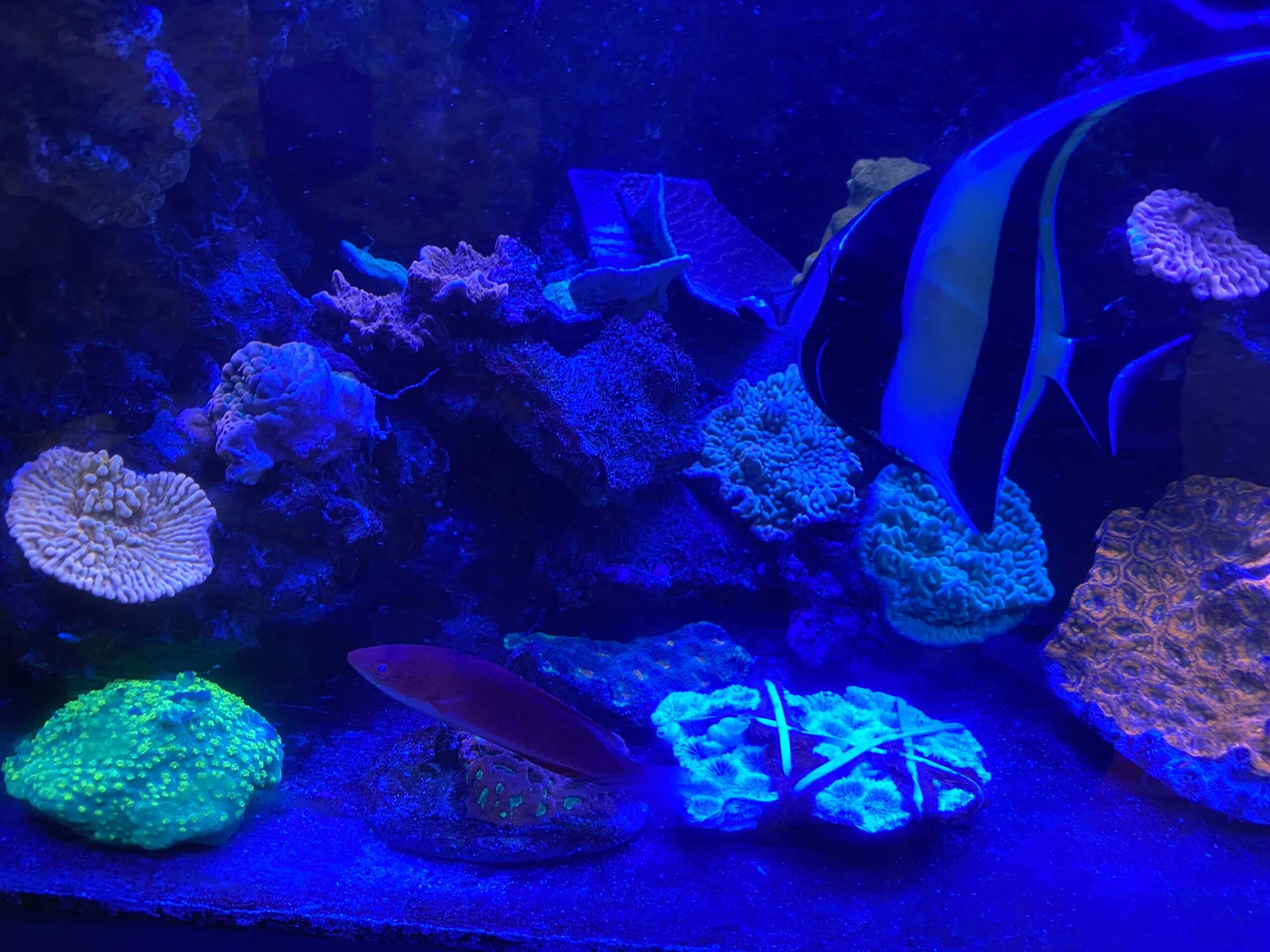
The next blend is a mix I learned from Sanjay Joshi. It is a mix of frozen white fish, the cheapest you can find, along with squid, shrimp, clams, mussels, and oysters. To this, I add nori, Selcon, dried garlic, and prenatal vitamins. The seafood is kept frozen and put through a “salad shooter”. Yes, the old device that used to be sold late at night. This chops everything up into a variety of sizes. It is all then mixed up while still frozen and then pressed into ice cube trays. This allows for one block at a time to be removed and fed.
After talking with Claude Schumacher about this food, he told me how important supplying fatty acids is to a tank, and after feeding this for the last three months I have seen more colorful fish as well as corals. So I think there is something to supplying fatty acids to a tank. The last mix I use is a mix of freeze-dried krill, mysis, rotifers, copepods, and golden pearls. These are rehydrated and then mixed with Selcon, garlic, and vitamins.
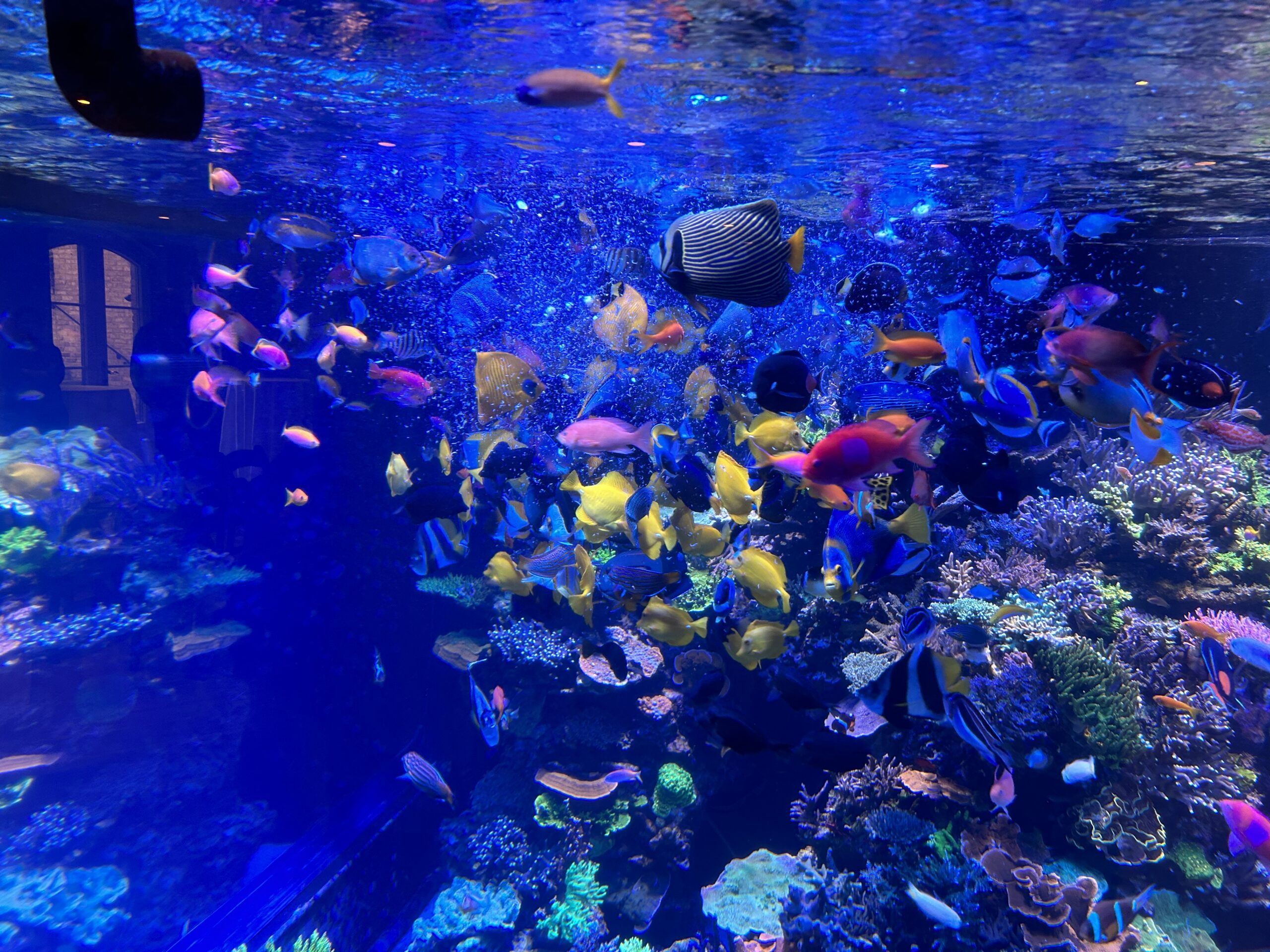
This mixture is then also placed in mini-ice cube trays and frozen. Small blocks of this are given once or twice a week as this mixture has the capacity to really bump up nutrients when fed often or in large quantities. Feeding these homemade foods along with pellets and flakes daily at least six and up to ten times a day in small amounts has proven to not only provide for the fish’s nutritional needs but also not lead to high nutrient levels.
Feeding fish properly takes time to get right and patience to determine exactly what they like. Not every fish eats every type of food, nor is every food good for every fish. That is if you feed carnivores nothing but plant-based foods they will suffer and conversely, if herbivores are only fed something like mysis shrimp they too will suffer. Providing the proper foods in the right quantity is what leads to healthy fish and a healthy tank. Taking the time to learn how to do this right goes a long way in having long-term success in this hobby.


